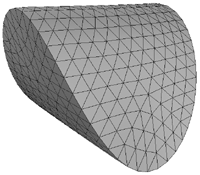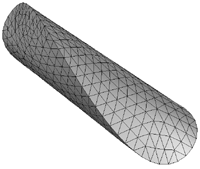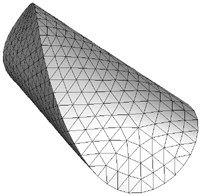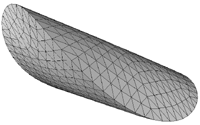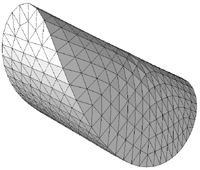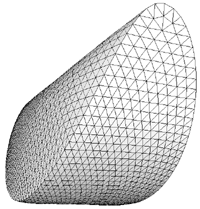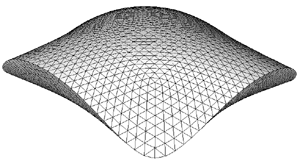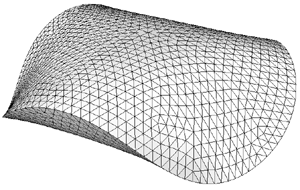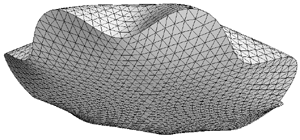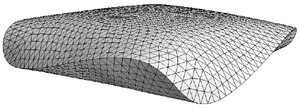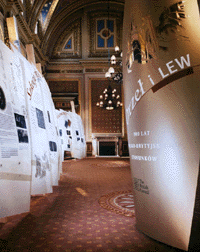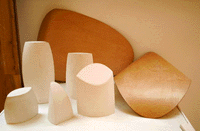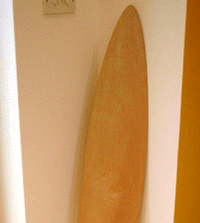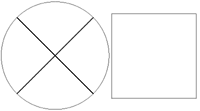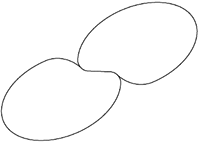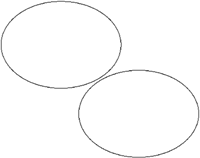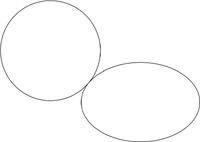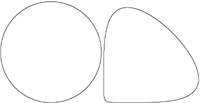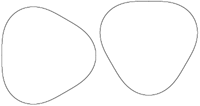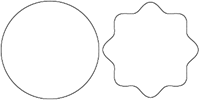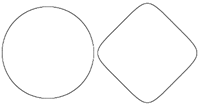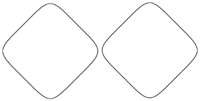Definition A dForm consists of two 2D shapes cut from a non-elastic material (eg: paper). The two shapes must have identical perimeter length. The 3D dForm is created by choosing a point on each shape for an initial join, the remainder of the perimeters are subsequently joined together. In general, a different 3D shape will result from different initial joining points. Folds may be introduced only if necessary. dForms are not restricted to convex outlines. However concave outlines often lead to intersecting surfaces and are thus hard to build physically. Two ellipsesThe dForm of two circles is always unexciting no matter where the initial connection is made. The next simplest shape might be considered to be two ellipses. If they are initially joined at the same position on each perimeter then the result is just a flat sheet. However if one ellipse is rotated with respect to the other before the initial join then more interesting solids result. Some computer generated examples are given below for 3 different rotation angles and two different ellipse radius ratios.
Ellipse and circle
Miscellaneous
Photos by Tony Wills
Outlines Experiment with dForms by printing the following outlines and joining them together.
|
